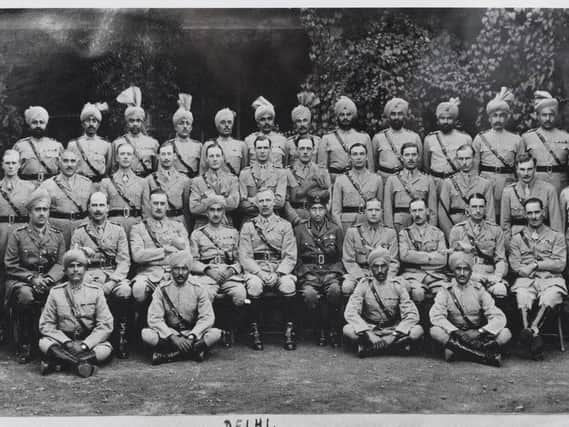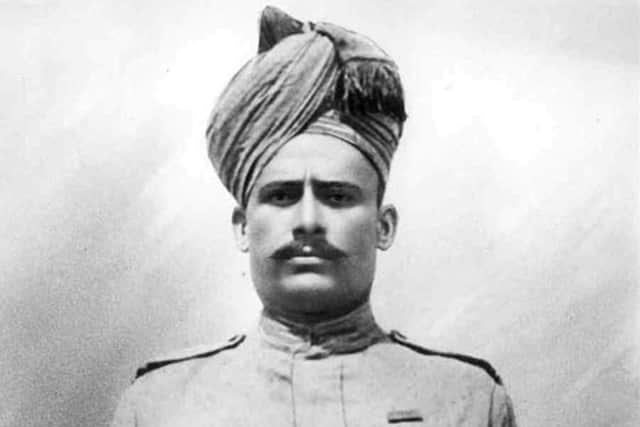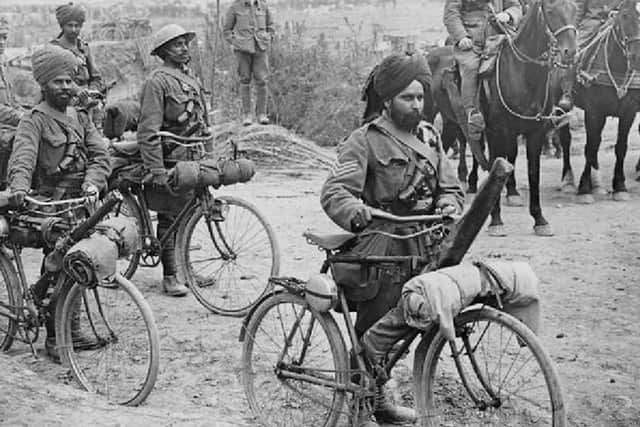The First World War hero whose family settled in Dewsbury in the sixties


The royal tour was to have a symbolic impact on our Heavy Woollen District. The visit paved the way for large numbers of Indian and Pakistani migrant workers to come and work in the empty mills of Dewsbury, Batley, Heckmondwike and Huddersfield, at a time when there was a severe labour shortage across the country.
But the origins behind the arrival of such a large post-war Commonwealth workforce can be traced back even before the royal visit of 1961 - to the two world wars.
Advertisement
Hide AdAdvertisement
Hide AdOur Reporter series feature follows on from last week’s edition, and this week looks at the British-Indian Army’s impact during the closing stages of the First World War. It also tells the story of a brave Victoria Cross recipient with close connections to Dewsbury.


The British-Indian Army’s contribution during the First World War was a huge one. Over a million soldiers from the Indian Sub-Continent were on active service on the Western Front in France, as well as across the Middle East by November 1918 (the month when the Armistice was signed).
Nearly 74,000 British-Indian soldiers had died fighting for Britain during the four year conflict, while another 62,000 were severely wounded - many of whom ended up being permanently disabled.
At least 17 Victoria Crosses were awarded to the brave soldiers of British-India. One of the recipients was “Subedar” (Warrant Officer) Private Shah Ahmad Khan. He was from the town of Rawat, situated outside Rawalpindi.
Advertisement
Hide AdAdvertisement
Hide AdPrivate Shah Ahmad Khan had been enlisted in the British-Indian Army’s 89th Punjabis Regiment, which was sent to Mesopotamia (now the modern state of Iraq). His platoon was guarding a section of the River Tigris in April 1916, when it came under attack from a powerful Turkish force.


All the men in Shah Ahmad Khan’s group were killed by heavy gunfire. Only Private Khan survived and continued to fire his machine gun.
He refused to retreat towards safer ground until the British were able to send reinforcements. His actions saved the day as a large amount of ammunition would have fallen under enemy control if it were not for his bravery.
He was awarded the Victoria Cross for utmost valour and gallantry.
Advertisement
Hide AdAdvertisement
Hide AdAlthough Private Shah Ahmad Khan never went abroad again after getting discharged from the army, some of his close relatives were to be a part of that actual first generation of migrant Pakistani workers who came to settle in Dewsbury during the sixties.
One family with close connections to him was to even open up a furniture shop in the 1970s on Headfield Road, Savile Town.
Those “army years” spent on the Western Front and in the Middle East helped build a strong sense of comradeship among the soldiers (as the archive photos in this feature show us).
The British-Indian Army became a part of their culture for the “Sephoys” who had served in it during the Great War. The army was to also remain an important source of employment for lots of young Indian men even after the First World War ended.
Advertisement
Hide AdAdvertisement
Hide AdFor the British Government, the discipline and loyalty from the actual “Indian” or “Asian contribution” was noted. The Sikh and Muslim “Sephoys” were seen as a very valuable asset while in the army.
The London establishment also had its eyes on them even after the war - as a potential peacetime civilian “army” of migrant mill workers.